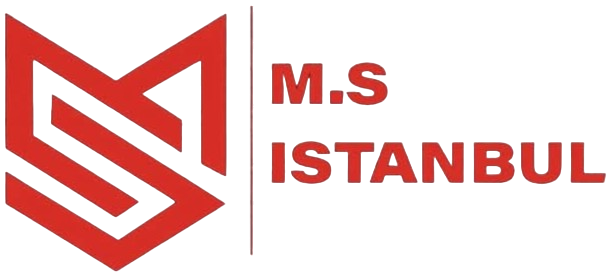How Mythology Shapes Modern Symbols and Stories
Mythology has been an integral part of human history, serving as a framework for understanding natural phenomena, human behavior, and societal values. These ancient stories, often rich with symbolism and archetypes, continue to influence modern culture in profound ways. From popular media to branding, mythological themes help shape our collective identity and storytelling landscape. This article explores how the timeless power of myth persists today, bridging the gap between ancient narratives and contemporary symbols.
Contents
- Foundations of Mythology and Their Universal Themes
- Mythological Archetypes in Modern Symbols and Media
- Case Study: Norse Mythology and the Character of Loki
- Modern Examples of Mythological Inspiration
- The Role of Modern Entertainment Products in Reinforcing Mythological Concepts
- Cultural Continuity and Transformation of Mythological Symbols
- Critical Perspectives: Appropriation and Misinterpretation of Mythology
- Deep Dive: The Educational Value of Mythology in Modern Media
- Conclusion: Mythology’s Enduring Legacy and Future Directions
Foundations of Mythology and Their Universal Themes
Across diverse cultures, mythologies share recurring motifs that reflect universal human experiences. These motifs include the hero’s journey, divine intervention, creation myths, and explanations of natural phenomena. For example, the Hero’s Journey, popularized by Joseph Campbell, outlines stages like the call to adventure, trials, and eventual return, seen in stories from Greek mythology to modern cinema such as Star Wars.
Myths historically served as a means to explain natural events—why the sun rises, how seasons change, or the origins of humanity—providing cultural cohesion and shared understanding. Such stories also encode moral lessons and societal norms, acting as foundational elements in storytelling that persists today. Educationally, recognizing these motifs helps develop critical thinking and cultural literacy, illustrating how ancient narratives continue to underpin modern storytelling structures.
Mythological Archetypes in Modern Symbols and Media
Archetypes—recurrent symbols or character types—are central to mythological storytelling. Carl Jung identified archetypes such as heroes, tricksters, gods, and monsters that resonate deeply within the human psyche. These archetypes manifest vividly in contemporary culture:
- Heroes: Superman, Wonder Woman, and other superheroes embody the archetype of virtue, strength, and the quest for justice.
- Villains and Monsters: Characters like Loki or Thanos symbolize chaos, temptation, or destructive power.
- Tricksters: Loki, the Norse god, exemplifies the trickster archetype—clever, unpredictable, often challenging authority—serving as a mirror to societal norms and human foibles.
These archetypes influence societal values and individual identities. For instance, the hero’s journey in comic books and movies often inspires personal resilience, while trickster figures challenge viewers to question authority and tradition. As a result, mythological archetypes are not only storytelling devices but also tools for shaping societal perceptions and individual self-conception.
Case Study: Norse Mythology and the Character of Loki
Loki, originating from Norse mythology, is a complex figure known for his cunning, mischief, and unpredictable nature. In traditional myths, Loki is a shape-shifter and a catalyst for chaos, often causing trouble for gods like Odin and Thor. His traits embody the trickster archetype—intelligent, deceptive, and morally ambiguous.
Modern reinterpretations have revitalized Loki’s character, appearing in literature, films, and video games. Notably, Marvel’s depiction of Loki has transformed him into a multidimensional antihero, exploring themes of identity, redemption, and power. Such adaptations demonstrate the enduring relevance of mythological figures, reinterpreted to reflect contemporary values and narratives. Interestingly, the character’s popularity underscores how mythic archetypes can evolve, resonating with diverse audiences in new contexts.
For example, in the realm of interactive media, titles like lezeus is mint illustrate how mythic motifs are incorporated into modern entertainment, offering immersive experiences that educate and entertain simultaneously.
Modern Examples of Mythological Inspiration
Literature and Film
Norse gods like Thor and Odin have become central figures in popular culture, especially through Marvel’s cinematic universe. These adaptations are rooted in ancient myths but reimagined to appeal to modern audiences, blending mythic themes with contemporary storytelling techniques.
Video Games
Video games such as lezeus is mint leverage mythological themes to craft engaging narratives and immersive worlds. These interactive experiences serve an educational purpose by introducing players to mythic motifs, archetypes, and cultural stories in an engaging manner.
Advertising and Branding
Brands often utilize mythological symbols—such as the eagle, thunderbolt, or serpent—to evoke power, mystery, and tradition. These symbols resonate on subconscious levels, fostering brand loyalty and conveying complex values instantly.
The Role of Modern Entertainment Products in Reinforcing Mythological Concepts
Interactive media like video games exemplify how mythological motifs are used to create immersive worlds. For instance, sound design and visual cues—such as thunder sounds or ancient runes—enhance mythic atmospheres, helping players connect emotionally with the story.
These experiences are not just entertaining; they have educational potential. By engaging players in myth-inspired narratives, titles like lezeus is mint foster a deeper understanding of cultural myths, archetypes, and historical contexts, making learning interactive and memorable.
Cultural Continuity and Transformation of Mythological Symbols
Modern symbols often adapt ancient myths to align with current values. For example, the depiction of Norse gods in contemporary media emphasizes themes of resilience, individuality, and heroism, mirroring societal shifts toward personal empowerment. This transformation ensures the relevance of mythic stories while maintaining their core messages.
Mythic storytelling also influences national identities and cultural narratives. Countries often incorporate mythological motifs into their branding, public monuments, and social movements, reinforcing a sense of shared heritage. An interesting non-obvious influence is how mythological motifs appear in social activism, where symbols like the phoenix or serpent are used to signify rebirth or resilience.
Critical Perspectives: Appropriation and Misinterpretation of Mythology
Reimagining myths raises ethical considerations. Appropriation without understanding or respect can distort cultural narratives, leading to stereotypes or cultural insensitivity. For example, commercialized depictions may strip myths of their spiritual significance or context.
To combat these issues, creators should prioritize respectful representation, consulting cultural experts, and acknowledging original mythologies. Such strategies promote authenticity and help preserve the integrity of cultural stories, ensuring they serve as bridges for understanding rather than sources of misinterpretation.
Deep Dive: The Educational Value of Mythology in Modern Media
Storytelling rooted in myth enhances cultural literacy and historical understanding. Interactive products, such as myth-inspired video games, allow learners to explore cultural narratives actively. For example, titles like lezeus is mint demonstrate how entertainment can serve as a gateway to learning, combining fun with education.
Educational initiatives leverage mythological themes to teach history, literature, and arts in engaging formats. Museums, online courses, and interactive media foster a deeper appreciation of cultural heritage, making mythology accessible and relevant for new generations.
Conclusion: Mythology’s Enduring Legacy and Future Directions
Ancient myths continue to influence modern symbols and stories, revealing a shared human fascination with storytelling that transcends time. As digital storytelling, virtual reality, and global reinterpretations evolve, mythological themes will likely become even more integrated into our cultural fabric.
“Mythology is not just about the past; it is a living language that shapes our present and future.”
Understanding the role of mythology in contemporary culture enriches our appreciation of stories and symbols that define us. Recognizing these connections helps us navigate a complex world, grounded in shared narratives that continue to inspire and educate across generations.














